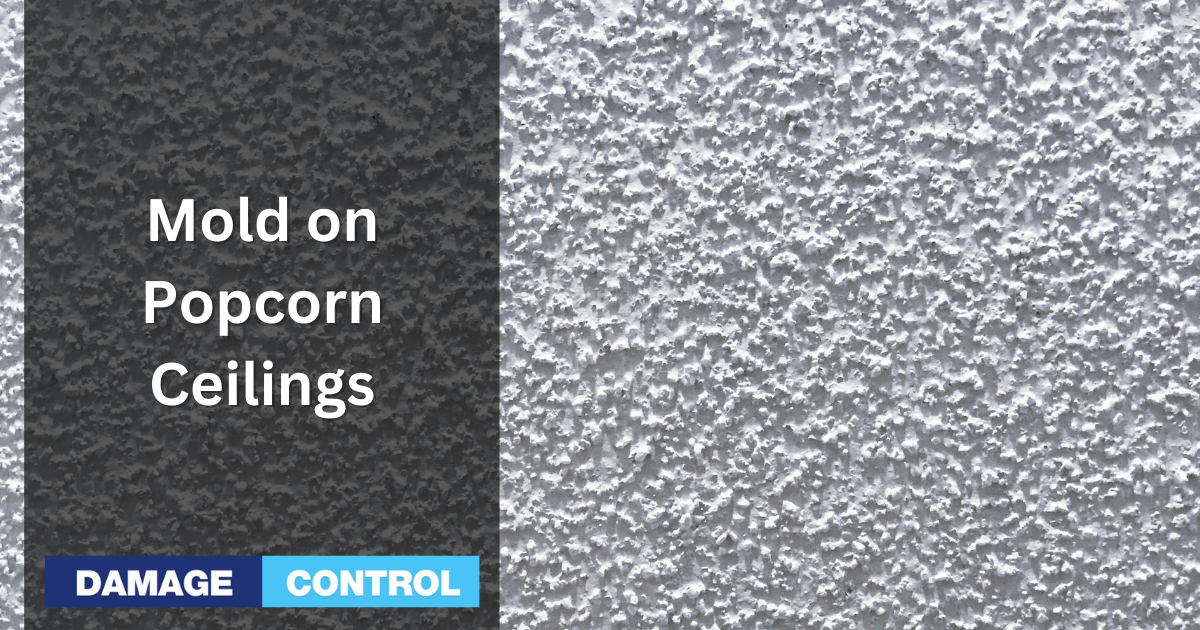Homeowners who have experienced water damage or high humidity can suffer from mold on popcorn ceilings. To properly address this type of problem, you must understand its causes, signs, and remediation strategies. A popcorn ceiling provides more surface area for mold spores, dust, and moisture to adhere to.
Knowing how to identify potential issues with your popcorn ceiling and what preventative measures you can take is critical.
What Is a Popcorn Ceiling?
Popcorn ceilings are textured ceilings created by spraying small pieces of vermiculite or polystyrene onto them. These ceilings were originally made of asbestos, which has been banned in building materials since 1989.
It's commonly found on ceilings and was popular as a ceiling covering from the mid-1940s to the 1990s.
Popcorn ceilings are commonly used for soundproofing rooms such as home theaters or recording studios, where noise reduction is paramount. They can also hide drywall imperfections due to their ability to cover large areas quickly. You don't have to patch each area with a joint compound or spackle before painting over them.
The bad thing about popcorn ceilings is that they attract mold spores, dust, and moisture. This makes them difficult to clean because cleaners can destroy them. This is evidenced by removing most popcorn ceiling material by soaking it with water and scraping it off.
Signs of Mold on Popcorn Ceiling
Visible discoloration or stains are the primary indicators of mold on popcorn ceilings. These stains may appear as dark spots, streaks, or patches in various colors like black, green, yellow, or brown. You can also expect mold to grow anywhere on your ceiling that you see obvious water stains, and also expect to replace that drywall.
Removing Mold on Popcorn Ceiling
Removal and Replacement of Affected Areas
In most cases, removing affected ceiling areas will be necessary to remediate the mold properly. This process involves carefully cutting out sections of drywall contaminated by mold and then replacing them with new materials. If done correctly, this will help eliminate all traces of mold from your home.
The negative aspect of replacing drywall sections on a popcorn ceiling is that you may be unable to match the popcorn texture. You will need a professional to refinish it.
It is critical to note that mold on your popcorn ceiling is insufficient to scrape off the popcorn texture and trash it. You have to replace the ceiling drywall as well.
Cleaning and Sanitization
After removing any affected areas, you must clean any surfaces in your home that were exposed to contaminated materials. These services typically involve using specialized chemicals designed to kill off any remaining bacteria or fungi present on walls or other surfaces within your home.
Preventing Mold on Popcorn Ceiling
It is important to prevent mold growth to protect your family's health and maintain the integrity of your home. Here are some prevention tips that you should consider:
Regular Inspections and Maintenance Practices
You can identify potential problems with your popcorn ceiling with regular inspections. Keep plumbing fixtures properly sealed and maintained, and watch for signs of water damage. If you notice any signs of mold growth, your air quality should be evaluated as soon as possible.
Use of Mold Resistant Paint
Applying mold-resistant paint on your popcorn ceiling will create additional protection against mold growth. In addition to inhibiting fungal growth, these paints still allow air to flow through, preventing moisture buildup like traditional paints. Use high-quality products from reputable brands when applying this type of paint.
By following these prevention tips, you can reduce the risk of developing water damage on your popcorn ceiling and protect yourself from costly repairs due to water damage or other related issues caused by excessive moisture in the home environment.
Conclusion
Take action as soon as you notice signs of mold growth on your popcorn ceiling. Keeping mold dry is the best way to prevent mold growth on your popcorn ceiling. This is done by repairing water damage and ensuring proper ventilation.
Damage Control 911 is a licensed and insured water damage and mold inspection contractor, and we've dealt with these ceilings many times. Wear protective equipment such as a respirator, a Tyvek suit, and gloves when dealing with popcorn ceilings built before 89. If it was installed before 89, give your local asbestos testing company to get it tested for asbestos before you disturb anything.

